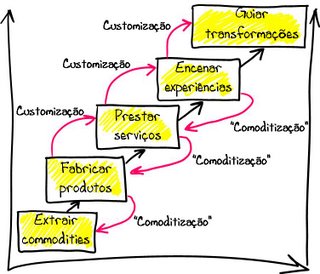Parte I.
.
Na parte I sublinhámos:
"The system of progress allows customers to evolve. When we add this idea of an evolving customer who continues to want and make progress"
A verdade é que o JTBD depende também do contexto do cliente. A evolução do cliente altera o contexto, logo altera a forma como o cliente percepciona e avalia as soluções que tem pela frente para contratar.
"When you study customers’ stated preferences—wants, needs, or desired outcomes—you are studying the interactions between customers and the system only at that moment. All those wants, needs, and desired outcomes will change when the systems that customers belong to change. Yesterday, customers wanted gaslight mantles that wouldn’t set their houses on fire, cheap meat, and somewhere to get their film developed. Today, those same customers want environmentally friendly CFL lights, organic kale salads, and accumulating likes on Instagram. Why did those needs change? The systems that customers belong to had changed.
...
Innovators must understand what the customer does and doesn’t know. We must abandon the idea that customers have needs or wants. We need to replace it with the idea that all customers have only one need: to make progress within the systems they belong to. Any discomfort or frustrations they experience in making that progress should not be thought of as needs but rather descriptions of interactions between customers, their JTBD, and the product they’ve currently hired for their JTBD."
Assim, o cliente que nunca entraria num ginásio "tradicional" começa a sua jornada num ginásio low-cost e aí pode ficar ou ... progredir e aspirar a algo mais.
.
Quem gere um ginásio "tradicional" tem de perceber que os clientes que capta poderão estar numa fase mais avançada desse progresso. Em boa verdade, não deve pensar em competir com o ginásio low-cost, deve antes aparecer como uma solução para quem está a namorar a ideia de que precisa de algo mais do que aquilo que tem actualmente.
.
Recordo os meus primeiros tempos de birdwatcher. Na primeira vez que fui ao Douro Internacional, nas
férias da Páscoa de 1983 passei tanto frio a dormir na minha tenda que logo percebi que o saco-cama que usava no campismo da praia não funcionava nas
fragas de Lagoaça. A pessoa que precisava de um saco-cama para o Douro Internacional no Inverno não era mais a mesma pessoa que usava saco-cama no Verão, o contexto era diferente.







%2006.21.jpeg)












